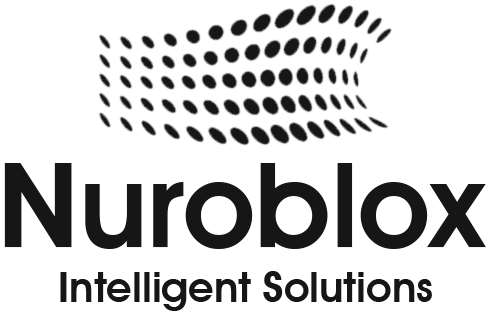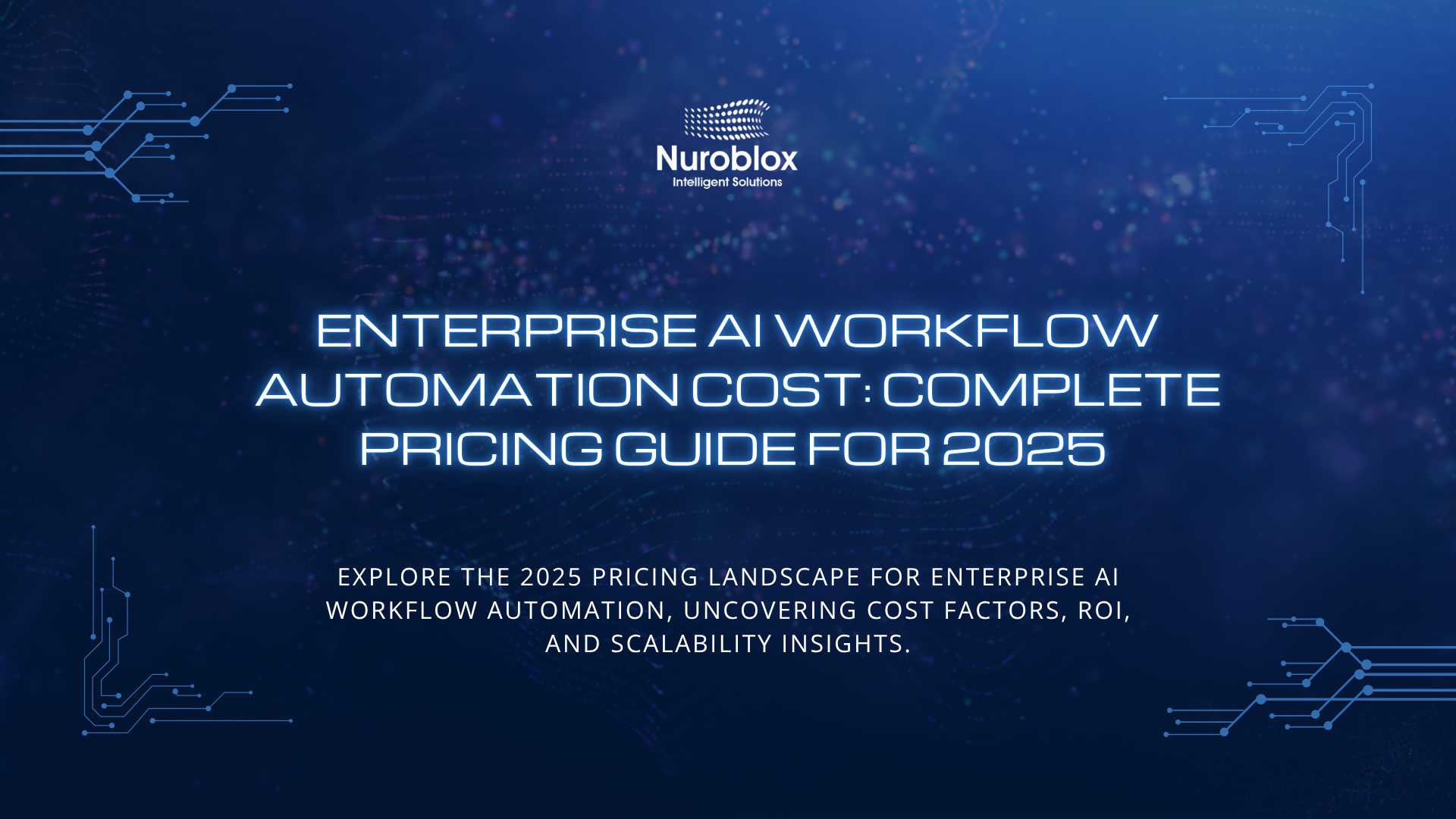Enterprise AI Workflow Automation Cost: Complete Pricing Guide for 2025
Enterprise AI workflow automation has become essential for organizations looking to streamline operations, reduce manual work, and improve efficiency. However, understanding enterprise AI workflow automation cost is crucial before investing in these transformative solutions. This comprehensive guide breaks down pricing structures, implementation expenses, licensing models, and factors that influence total cost of ownership.
Understanding Enterprise AI Workflow Automation Pricing
Enterprise AI workflow automation represents a significant investment that varies dramatically based on organizational size, complexity, and implementation scope. The total cost encompasses multiple components including software licensing, implementation services, training, and ongoing support.
Most organizations allocate budgets across several cost categories. Software licensing typically accounts for 40-50% of the total investment, implementation services consume 30-40%, training represents 10-15%, and ongoing support comprises the remaining 5-10%. Understanding this breakdown helps organizations budget more effectively and identify where to allocate resources strategically.
Implementation Costs by Enterprise Size
Implementation costs for enterprise AI workflow automation vary significantly based on organizational scale and complexity. Different company sizes have distinct requirements and resource needs that directly impact project expenses.
Small Enterprise Implementation Costs
Small enterprises typically invest between $50,000 and $150,000 for initial AI workflow automation implementation. This range covers software licensing for a limited number of processes, basic customization, and essential training for key personnel. Small businesses often benefit from SaaS-based solutions that reduce upfront capital expenditure and allow for gradual scaling as automation needs grow.
Mid-Market Implementation Costs
Mid-market organizations generally invest $150,000 to $500,000 in comprehensive workflow automation solutions. This investment level supports automation of multiple critical business processes, integration with existing enterprise systems, and dedicated implementation teams. Mid-market enterprises typically require more sophisticated customization and integration work than smaller organizations.
Large Enterprise Implementation Costs
Large enterprises frequently invest $500,000 to $2,000,000+ in enterprise AI workflow automation initiatives. This significant investment reflects the complexity of large-scale operations, integration with multiple legacy systems, extensive customization requirements, and comprehensive change management programs. Enterprise-grade solutions often include white-label capabilities and advanced governance features.
Annual Licensing Models Explained
Different licensing approaches offer distinct advantages for various organizational structures and automation requirements. Selecting the right licensing model directly impacts long-term cost efficiency.
Per-User SaaS Licensing
Per-user licensing costs typically range from $2,000 to $5,000 annually per concurrent user for cloud-based solutions. This model works well for organizations with fluctuating automation needs and provides flexibility to add or remove licenses based on demand. SaaS licensing eliminates substantial infrastructure costs and provides automatic updates and maintenance.
Per-Process Licensing
Process-based licensing charges $10,000 to $50,000 annually per automated workflow. This model suits organizations with a defined, limited number of critical processes to automate. Per-process pricing becomes advantageous when organizations automate fewer than 5-10 key workflows rather than enterprise-wide deployments.
Concurrent License Arrangements
Large enterprises often negotiate concurrent license arrangements costing $50,000 to $200,000+ annually. These models allow unlimited users to access the platform while paying for a defined number of simultaneous executions. Concurrent licensing typically offers better economics for organizations planning extensive automation across departments.
Key Cost Factors Affecting Your Investment
Several critical factors influence the actual investment required for enterprise workflow automation. Organizations must carefully evaluate these elements during planning phases.
Complexity of processes dramatically impacts costs. Simple, linear workflows require less customization than complex processes involving multiple decision points, exception handling, and third-party system integrations. Organizations automating highly complex workflows should budget additional implementation resources.
System integration requirements significantly affect project expenses. Connecting automation solutions with legacy systems, multiple cloud platforms, and specialized applications requires experienced integration specialists and comprehensive testing. Organizations with siloed, disconnected systems typically face higher integration costs.
Scale and number of processes directly influence licensing and implementation expenses. Automating 20 processes costs substantially more than automating two or three core workflows. Organizations should prioritize high-impact processes first to maximize ROI during initial implementations.
Training and change management intensity varies based on organizational readiness and user acceptance. Organizations requiring extensive training programs, change management consultation, and ongoing user support should budget additional resources beyond basic licensing.
Return on Investment and Cost Savings
Understanding potential returns justifies the investment in enterprise AI workflow automation. Most organizations experience significant benefits that offset implementation costs within 12-18 months.
Cost reduction typically ranges from 30-50% in automated processes through elimination of manual work, reduction of errors, and decreased processing time. Organizations automating invoice processing, data entry, customer service requests, and approval workflows commonly report 40%+ cost savings in affected departments.
Productivity improvements average 35-45% when employees redirect time from repetitive tasks to strategic initiatives. Employees freed from manual work focus on analysis, decision-making, and relationship management; higher-value activities that drive business growth.
Error reduction reaches 80-95% in many automated workflows. AI-powered automation eliminates human mistakes in data entry, calculations, and process steps, improving data quality and regulatory compliance. Lower error rates reduce downstream costs from rework and corrections.
Pricing Models – Subscription vs. On-Premise
Organizations choose between cloud-based subscription models and traditional on-premise deployments, each with distinct cost implications.
Cloud-Based Subscription Model
Cloud solutions typically charge monthly or annual subscriptions ranging from $5,000 to $50,000+ monthly depending on scale and complexity. Subscription models eliminate large upfront capital expenditure, reduce IT infrastructure costs, and simplify maintenance. However, cumulative subscription costs over 5-10 years can exceed on-premise investments for organizations with stable, mature automation requirements.
On-Premise Deployment Model
On-premise solutions require substantial upfront investment ($200,000-$1,000,000+) for software licenses, infrastructure, and implementation but offer lower long-term operational costs. Organizations choosing on-premise solutions must budget for IT staff, server infrastructure, security, and ongoing maintenance. On-premise deployments suit organizations with stringent data residency requirements, extensive customization needs, or existing substantial IT infrastructure.
Hidden Costs and Total Cost of Ownership
Organizations often overlook expenses that accumulate throughout implementation and operation. Total cost of ownership includes direct software and implementation expenses plus numerous hidden costs affecting long-term budgets.
Change management consulting often costs $30,000 to $150,000 but proves essential for successful adoption. Organizations underestimating change management challenges frequently experience poor user adoption, extended implementation timelines, and reduced ROI realization.
Custom development and integration work frequently exceeds initial estimates by 20-40%. Complex legacy system integrations, specialized workflow requirements, and emerging business needs drive additional development expenses throughout implementation.
Ongoing support and maintenance typically represent 8-15% of software licensing costs annually. Organizations should budget for vendor support contracts, security patches, platform updates, and performance optimization services beyond basic license fees.
Strategies to Optimize Your Enterprise Automation Investment
Smart organizations implement strategies to maximize ROI and minimize unnecessary expenses throughout their automation journey.
Start small with pilot projects focusing on 2-3 high-impact processes. Successful pilots demonstrate value, build internal support, and inform larger rollouts. Organizations implementing pilots typically experience faster ROI and more successful full-scale deployments.
Prioritize processes systematically using quantifiable metrics like processing volume, error rates, manual hours, and cost impact. Automating high-volume, repetitive processes with clear cost drivers delivers measurable returns quickly.
Leverage low-code and no-code platforms to reduce development costs and accelerate implementation timelines. These platforms enable business users to participate in automation development, reducing IT bottlenecks and associated labor costs.
Negotiate vendor pricing based on multi-year commitments, volume discounts, or bundled services. Organizations evaluating multiple vendors typically secure 10-30% better pricing through competitive negotiation.
Comparing Enterprise AI Solutions by Cost Profile
Different platforms offer varying pricing structures and feature sets. Organizations should evaluate total cost of ownership rather than focusing solely on licensing fees.
Leading solutions range from specialized RPA platforms costing $15,000-$100,000 annually to comprehensive intelligent automation suites exceeding $500,000 annually. Mid-market solutions typically cost $50,000-$200,000 annually and offer balanced capabilities for most organizations.
Enterprise-grade platforms often provide better per-process economics for large-scale deployments while specialized platforms offer flexibility for organizations automating limited processes. Organizations should request demos, ROI calculators, and detailed pricing comparisons before committing to specific solutions.
Calculating Your Expected ROI
Organizations can estimate expected returns using straightforward calculations based on their specific automation opportunities.
Calculate hours saved monthly by multiplying process volume by average time per process. Multiply monthly hours by loaded employee cost (typically $50-$150 per hour for FTEs) to determine monthly savings potential. Multiply monthly savings by 12 to project annual savings.
Subtract total cost of ownership (licensing, implementation, training, support) from projected annual savings. The difference represents net annual benefit. Divide implementation costs by annual net benefit to calculate payback period in years.
Most organizations achieve payback periods of 12-18 months for strategic automation initiatives. Organizations should recalculate projections quarterly, adjusting assumptions based on actual automation performance and identifying additional automation opportunities.

Organizations often underestimate expenses related to governance, security, and compliance requirements for enterprise automation.
Governance frameworks and documentation require 50-200 hours of professional services depending on organizational complexity. Establishing audit trails, approval workflows, and compliance controls is essential but adds to overall implementation costs.
Security assessments and hardening typically cost $10,000-$50,000 for enterprises managing sensitive data. Organizations must ensure automation solutions meet security standards, including encryption, access controls, and regular security testing.
Audit and compliance preparation adds 10-20% to overall implementation budgets. Organizations in regulated industries (finance, healthcare, pharmaceuticals) face additional compliance requirements that increase automation investment.
Future Cost Considerations for AI Workflow Automation
Enterprise automation landscapes continue evolving with emerging technologies and capabilities affecting future costs.
Advanced AI and machine learning integration will likely reduce human intervention in complex workflows. Organizations can expect modest cost premiums initially for these capabilities, though long-term costs may decrease as these features become standard platform components.
Autonomous agents and agentic automation represent the next evolution in workflow automation. These systems make decisions and execute processes with minimal human oversight. Organizations exploring autonomous agents should budget for additional implementation complexity and change management, though long-term ROI potential exceeds traditional RPA.
Cross-platform orchestration increasingly replaces isolated automation instances. Unified platforms managing multiple automation types (RPA, AI, workflow orchestration) may reduce overall costs compared to maintaining separate solutions, though larger implementation investments might be required upfront.
Conclusion
Understanding enterprise AI workflow automation cost empowers organizations to make informed investment decisions and maximize returns. While implementation expenses vary significantly based on company size, complexity, and scope, most organizations experience rapid payback periods of 12-18 months through cost savings and productivity improvements.
Organizations should evaluate solutions based on total cost of ownership rather than initial pricing, consider pilot projects to validate assumptions, and prioritize high-impact processes for maximum ROI. Modern enterprise automation investment increasingly includes advanced capabilities like autonomous agents and intelligent orchestration, offering long-term competitive advantages beyond immediate cost reduction.
By carefully planning automation initiatives, selecting appropriate solutions for organizational needs, and implementing proven strategies, enterprises transform workflow automation investments into significant competitive advantages and operational excellence. Start your evaluation today by assessing which processes offer the greatest automation opportunities and expected returns for your organization.


